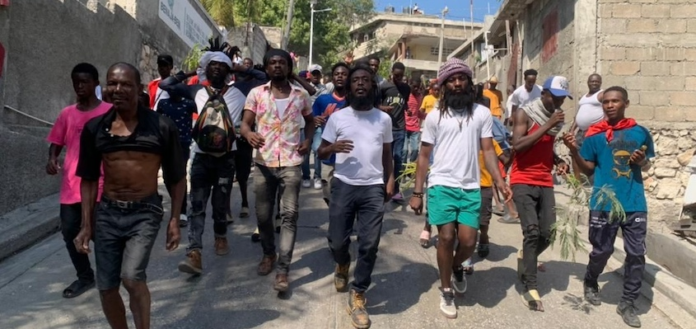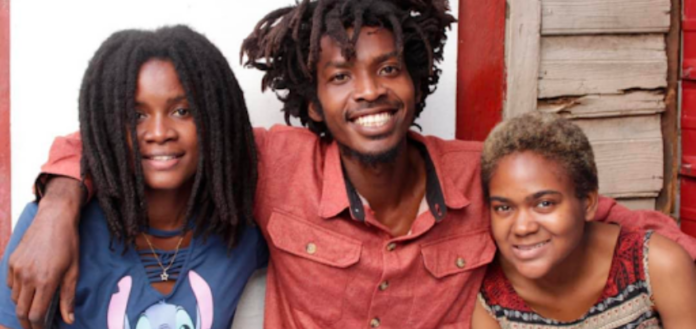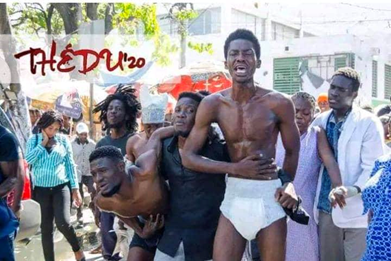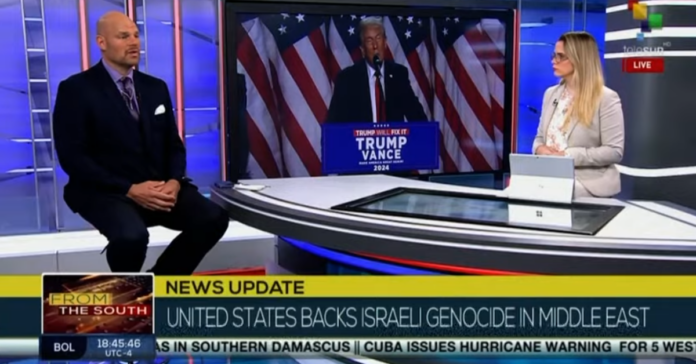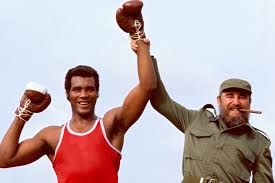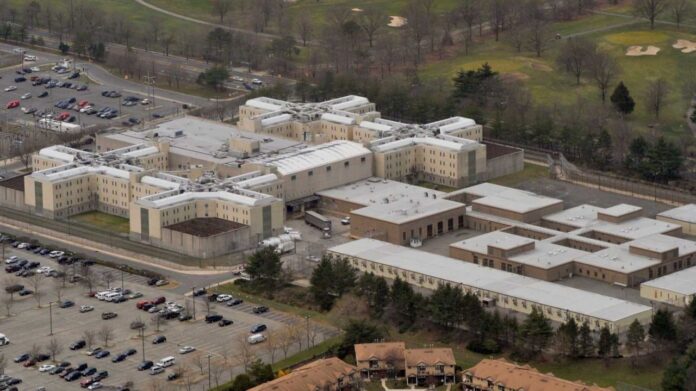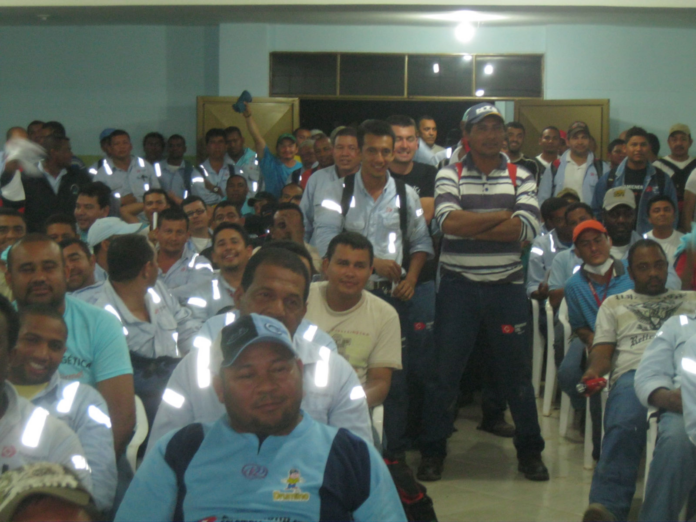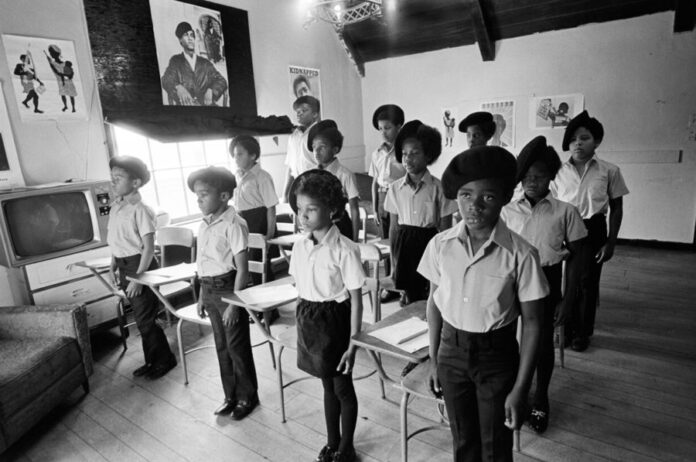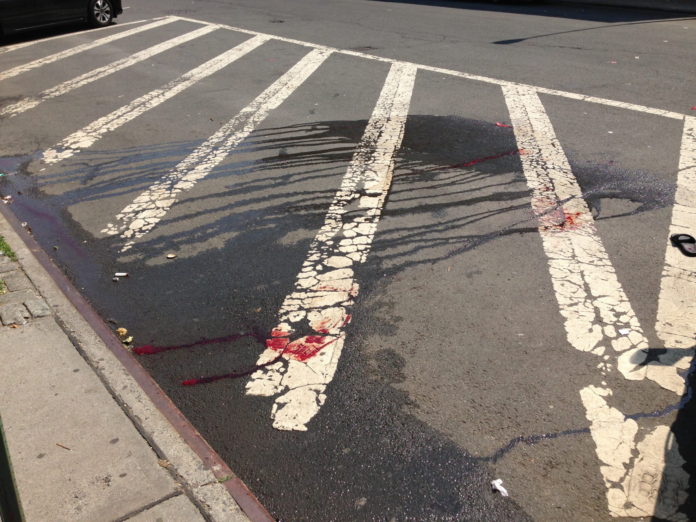Originally published at Black Agenda Report on March 27, 2024 by interviewer Ann Garrison
Ann Garrison spoke to Professor Danny Shaw, who speaks fluent Haitian Creole and returned from his last trip to Haiti one month ago.
ANN GARRISON: Danny, I know this is a large ask, but can you outline what has happened in Haiti over the past 20 years, beginning with the overthrow of President Jean Bertrand Aristide in 2004 and leading to the current crisis?
DANNY SHAW: The last truly participatory democratic elections in Haiti took place in 2000, when the masses were inspired once again by President Jean Bertrand Aristide, a liberation theologian and truly a man of the people, who came out of the La Saline and Cité Soleil ghettoes. The movement he led was so powerful that it was called Lavalas, the word for flood in Haitian Creole.
Aristide had been the democratically elected president in 1991, but he had been taken out by a coup after just a few short months. Then, when the Haitian oligarchs and the US foreign policy establishment saw that he was about to be elected again in 2000, they immediately mobilized a hybrid war against him, first a media war and an aid war—cutting off aid. At the time, Haiti was receiving roughly $600 million per year through NGOs and USAID, and that was halved as soon as Aristide returned to power in 2001.
The hybrid war also galvanized and armed these paramilitary outfits, and one of their leaders, Guy Philippe, led the coup that removed Aristide. Philippe received all types of help from the Dominican generals and oligarchs, and from US intelligence. With relatively few paramilitary soldiers, he crossed the Dominican border to northern cities and then the capital, Port-au-Prince, in the south. And he of course was working very closely with what was called the the Group 184 led by a multimillionaire Haitian businessman. Most of these Haitian oligarchs who own the mines, plantations, and ports don’t even have full- time residence in Haiti. They live in Miami, France, and Montreal.
That 2004 coup was engineered and carried out by the US, France, and their proxy paramilitary forces in Haiti. Once it was successful, the Haitian people were again up against a cruel, unelected military dictatorship. This continued for two years, but ultimately Rene Préval was elected president for the second time. Both times the US took out Aristide, Rene Préval followed him. Préval is part of Lavalas but is by no means the inspirational leader that Jean Bertrand Aristide is.
Elections were held again in 2011, and that’s when Michel Martelly came to power. He was from the PHTK, which was in power before Aristide was removed. Martelly was extremely corrupt and had no real political leadership experience. He was a neo-Duvalierist, and he had nothing but scorn for the 99.9% of Haiti. Haitians often talk about him as the one responsible for the gangster ideation of Haiti. Experts on Haiti agree that the country really begins to be in the hands of the paramilitaries after he comes to power in 2011. He’s just another kleptocrat and US government lackey, who serves US and oligarchic interests.
Then, in 2018, a mass, nationalist, anti-colonialist movement exploded against the PetroCaribe Scandal . Venezuela had sent billions of dollars in petrol aid in solidarity with Haiti, seeking to work with the the past Aristide-type leadership, the Lavalas leadership that follows in the footsteps of Jean-Jacques Dessalines , the original liberator of Haiti. But what they got was President Michel Martelly and then President Jovenel Moise, who stole more than $6 billion of the PetroCaribe funds.
I believe it was at the end of summer 2018 when hundreds of thousands of people took to the streets against the government of Jovenel Moise, demanding to know where their money was. Moise was highly unpopular, as was Michel Martelly.
This movement was explosive. I was there in 2021, when there were supposed to be new elections, but those elections never happened. Jovenel Moise, unpopular as he was, insisted on staying in power, and a movement of millions of Haitians exploded. It galvanized all sectors of Haitian civil society, and the streets were full of resistance. I have many fond memories of those days.
AG: This is 2021.
DS: Yes. Then on July 7, 2021, President Jovenel Moise was assassinated and that became carte blanche for the Haitian ruling class to repress the movement. The movement of millions of Haitians was no longer in the streets. And then the US came in once again and said that Ariel Henry, one of the coup-mongers from 2004, would be the prime minister.
There was no election. The Haitian people again had no say. And then Ariel Henry was in power up until last week when the State Department, according to the Miami Herald, informed him that he was no longer president while he was on a plane flying back from Kenya, where he’d been trying to arrange for Kenyan police to lead the new invasion and occupation of Haiti. So Haiti is now without a head of state. Headlines will say it’s a failed state, but I think we can say it’s a successfully neo-colonized state.
AG: What role is Jean Bertrand Aristide playing in Haiti now?
DS: It would be difficult to quantify the amount of trauma inflicted upon the population who see him as the modern father of the Haitian popular movement. It’s similar to how we hear medical experts say that children in Gaza don’t have post-traumatic stress disorder because all they’ve ever known is trauma. I think that’s true of Haiti, the Palestine of the Caribbean, and certainly their most righteous popular leaders like Aristide. Because of US imperialism, he was twice couped and twice kidnapped.
He has largely retired to private life, where he now oversees a university, offering opportunities to thousands and thousands of Haitian students, the next generation of Haitian professionals, doctors, lawyers, writers, and poets, and he’s still extremely popular, specifically in the ghettos of Haiti, where so much of his support came from. In 2021, before the mass movement was repressed, it was not uncommon to see T-shirts and signs and portraits of Aristide wherever the popular movement was flexing its muscles. Haitians have been saying for decades that he has more than nine lives because there’ve been so many ambushes and attempts on his life. In 2004, he was whisked off to the Central African Republic, then to South Africa, where he received an anti-colonial hero’s welcome, but he wasn’t able to return to Haiti for six or eight years. Now I think it’s kind of an implicit deal with the corrupt colonial power structure that he can stay so long as he doesn’t rise to power again.
So the 2021 movement wasn’t trying to pivot to Aristide again for a third presidency, but it was demanding a true transition, not one overseen by the Blinkens and Bidens and the Republicans and the Democrats, but one that’s overseen by true representation of the peasant sector, the women’s sector, the neighborhood sectors, and all the popular sectors of Haiti.
AG: What are the most salient points that you would make to anyone who’s been hearing that Haiti is in the news again, but doesn’t have a lot of background?
DS: How tragic, how racist it is that Haiti is only in the news when it has to do with some disaster—a coup, an earthquake, an epidemic, the next occupation, or the assassination of this or that president or dictator. Two weeks ago, Haiti was trending on social media and on front pages all over the world. I even received calls from India about Haiti, which is quite rare. And it was because there were these horrific white supremacist rumors that Jimmy Chérizier, one of the paramilitary bosses, was a cannibal who had eaten one of his victims.
Any attack like that on any Haitian is an attack on all Haitians, on their self-image and self-esteem. The war on Haiti is an information and media war. So I think it’s important to move beyond those headlines. There is indeed a crisis but it’s not a crisis that was just made in Haiti. We have to understand the colonial context. MOLEGHAF, one of the key grassroots popular movements in the ghettos of Port-au-Prince, lays it out that the masses are trying to organize their own transition out of this crisis, a popular transition. MOLEGHAF and the Black Alliance for Peace will have a press conference about it this week.
AG: What does MOLEGHAF stand for?
DS: It stands for the National Movement for Liberty and Equality of Haitians for Fraternity. It’s one of the grassroots actors that organizes popular education and resistance like Fanmi Lavalas. Everyone should check out them and their people-to-people fundraiser.
The United States is overseeing a seven-person “transitional government.” Last week Anthony Blinken oversaw a meeting to arrange it with CARACOM leaders, particularly Guyanese President Irfaan Ali and Jamaican President Andrew Holness. These are imperial stooges.
Anyone who wanted to even be considered for this new, seven-person, transitional government had to agree to the pending US-sponsored and directed invasion and occupation of Haiti, the fourth invasion and occupation in the past 100 years.
The paramilitary gangs supposedly signed a truce about 10 days ago, but the violence continues. There are now close to half a million Haitians who have been displaced by these death squads. The mainstream media calls them “gangs,” but that word isn’t sociologically sufficient to understand this phenomenon. These are paramilitaries armed to the teeth.
The US and the Haitian ruling class have a history of using paramilitaries, and they’ve reactivated their agent, Guy Philippe. It seems as though the US understands that the more chaos they can engender, the more justification they have for carrying out their fourth invasion and occupation.
AG: What role would you say the drug traffic from Latin America to North America and Western Europe is playing in this?
DS: It’s extremely difficult for an investigative journalist or an ethnographer, like myself, to connect all the dots, but it’s very clear that in the south of Haiti, there are massive shipments of cocaine and marijuana coming into the ports. The ports are controlled by the billionaire and multimillionaire families. They also control landing strips in small private airports.
No guns and no drugs are produced on the island. There’s no culture of consuming these drugs there. Moonshine is the only intoxicant most people can afford. So it’s a transshipment point because of this intentionally “failed state.” The mercenary bosses, the leaders of the death squads, the warlords, they’re the ones that control the central arteries of Haiti, the central roads that connect Port-au-Prince to the south and every exit out of Port-au-Prince. That’s why we can say that Port-au-Prince is like Gaza or the West Bank.
It’s highly profitable for these gang bosses to control what we would call highways. And that’s how we begin to explain why there are paramilitary gangs. Haitians always say that this is a planned and organized disaster because it’s inexplicable that in a country where the vast majority of people try to survive on two dollars or less per day, there will be these young people gripping weapons that range in price from $10,000 to $30,000.
How could they have such massive arsenals? Well, it’s because the drugs come into the south and then get exported from the north of Haiti to the North American and European markets. Maybe the oligarchic families of Haiti’s 0.01% could afford cocaine, but hardly anyone else can, and it’s not part of Haitian culture.
There’s a history of drug dealing among the kleptocrats and the ruling class and the generals under Duvalier and the US-appointed generals.
AG: I believe you said that there’s only one boat in the Haitian Coast Guard.
DS: Yeah, one boat, so it’s a smuggler’s paradise, and every day there are fewer police. On average, every month, these paramilitaries kill dozens of police. Not that the Haitian police as an institution are the answer; they fired on the masses during the 2021 mass uprising.
Guy Philippe served time in a Florida jail for being a drug trafficker and money launderer, and now he’s back attempting to be the next president of Haiti.
AG: Some say that the coalition of paramilitary groups led by Jimmy Chérizier, aka “Barbecue,” is revolutionary. What’s your response to that?
DS: I think it would be a grave mistake to oversimplify a complex historical and sociological phenomenon. To anyone who tells you Barbecue is the savior of Haiti, I would say that’s absolutely ridiculous. That’s based on my many different conversations across the ghettos of Port-au-Prince and in the north and south. There are an estimated 12 to 13 million Haitians, and they probably have 12 to 13 million different points of view on Barbecue.
And what I hear from the Haitian people all the time is that if he’s truly a revolutionary, how come all the blood on his hands is that of the poor, the dispossessed? You know, show us the pudding. Talk is cheap. When are you going to walk the walk? If you really have a war on the oligarchy and this putrid system, how are you going to carry that out? Are you going to march on the oligarchs in the mountains? So a lot of people think it’s all talk.
Some people just see him as a media phenomenon. There’s been an incredible amount of intrigue around him. What you hear a lot and what I heard in 2021, when I marched shoulder to shoulder with hundreds of thousands of Haitians in the streets, was that Barbecue was one of the enforcers for Jovenel Moise, the dictator at the time, and that he stopped people from the ghetto in downtown Port-au-Prince from participating in that massive popular insurrection.
Some say that Barbecue’s name is because when he was a little boy, there were so many Jimmies where he lived that he was called Jimmy Barbecue because his mother sold barbecued chicken at night. Others say it’s because he burned down so many people’s houses.
I think it would be a grave mistake for anyone to put all of their eggs in the Jimmy Chérizier basket. He’s completely unproven. He’s never been connected to any type of actual organized resistance across Haiti, so time will tell. It’s way too early to cast any type of final judgment. For foreigners, it would be so exciting to think that he is a Haitian Che Guevara, but the majority of the Haitian people are not buying that.
Jimmy Chérizier is definitely a leader, but what type of leader? There’s no question that he’s charismatic. To be able to somehow bring together all of these different gangsters, some of whom are just 100% criminal cutthroat butchers and rapists, is no small feat. But what is he going to do with this alliance, and how much bloodshed and displacement are they responsible for? About two weeks ago, Jimmy Chérizier held a press conference to announce that all these different paramilitary death squads are uniting. And he says to the Haitian people, “You have to excuse us, you have to forgive us for what we’ve done.”
You’re talking about upwards of half a million refugees, internally displaced people, just in Port-au-Prince. So it seems completely ridiculous to think they can just say they’re sorry.
The true revolutionary force in Haiti is the leadership of the mass sectors, the peasantry, the workers, the ghettos, the women’s sectors, and the unification of all these civil society sectors, but they’re always under the gun. It’s been said by so many that Jimmy Chérizier and these other gang leaders are the Tonton Macoutes of today, so we should continue to weigh all of the ethnographic evidence and provide platforms for different Haitians and translate their voices, as we will in the press conference we have coming up with MOLEGHAF and the Black Alliance for Peace.
I think that’s the most important role that we can play to encourage the Haitian people to be the protagonists who usher in a new day with a true sense of economic, political, cultural, and diplomatic self-determination.
